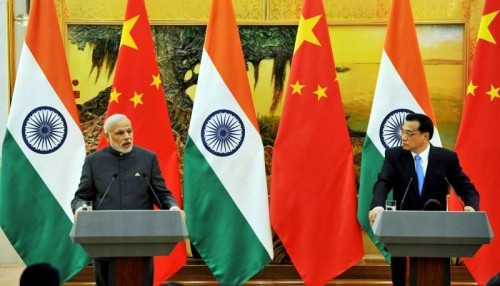
By Amitava Mukherjee
On June 6 the Dhaka Tribune, a respected and reliable Bangladeshi newspaper, carried a report which merits attention. According to it, Chinese Premier Li Keqiang would visit Bangladesh in September to commemorate 40 years of diplomatic relations between the two countries.
This was announced by A.K.M. Shameem Chowdury, the press secretary to Bangladeshi Prime Minister Sheikh Hasina Wazed. The timing was significant. Indian Prime Minister Narendra Modi was visiting Bangladesh as the euphoria over the signing of the Land Boundary Agreement was sweeping the country. A special envoy of China’s foreign ministry was in Dhaka on the eve of Narendra Modi’s visit. Was Dhaka trying to send a message to New Delhi? Perhaps one cannot be faulted for trying to detect a pattern in it.
Obviously, Bangladesh is trying to reposition itself in South Asia’s strategic map. For Dhaka it is perfectly all right. Every nation must have the rights to chart out its own foreign policy and the Awami League-led government certainly cannot deny the socio-political ground reality in Bangladesh which has a tinge of religious fundamentalism and wishes to move away from anything which is India-centric. Dhaka knows it very well that it enjoys a highly geo-strategic position and has perhaps decided to use it to the hilt.
Let us wait for Li’s visit. Meanwhile some light may be thrown on Dhaka’s growing relations with Beijing. In June 2014, Sheikh Hasina had visited China. There, she not only enterd into some agreements which were militarily uncomfortable for India but after coming back to Dhaka she expressed her readiness to condone China for its hostile attitude during the Bangladesh Liberation War. What was most important was Hasina admitted that her country’s relationship with China had assumed a strategic nature.
Not that India does not understand the import of Bangladesh slowly drifting towards China’s sphere of influence. The initiative taken by Narendra Modi in ratifying the Land Boundary Agreement by the Indian parliament and ultimately the signing of it in Dhaka are an outcome of this realization. Apart from it, many agreements on trade, commerce, economic cooperation and rail-road-water connectivity have been signed. There will be a fresh Indian credit of $2 billion amd a power transmission for 35 years. The Indian private sector too would make heavy investments in Bangladesh. But not a word on military cooperation was heard.
Bangladesh is on a weapon buying spree for the last couple of years. Bangladesh is scheduled to get two Chinese submarines this year for $203 million. Last year, at the time of announcing the deal, the Chinese ambassador in Dhaka had said that these two boats would help Bangladesh in bringing stability in the region. Surely the ambassador had very clearly delineated his country’s actual goal.
Bangladesh’s silent acquisition of arms should surprise Indian policymakers. Apart from the two submarines, it commissioned two new Chinese frigates in 2014.
Chinese anti-ship missiles, tanks and fighter aircraft were added to its armoury between 2008 and 2012 . Moreover Bangladesh has purchased helicopters from France, aircraft from Germany, light helicopters from Italy and armoured personnel carriers from Russia. The Bangladesh Navy has also testfired automated missiles. Chinese arms now constitute 82 percent of the total arms purchases of Bangladesh while the corresponding figure for Pakistan is only 54 percent.
Bangladesh’s unique geo-strategic location gives it the advantage of overlooking the highly strategic sea lanes of the Indian Ocean which connect China to the Persian Gulf and the Strait of Hormuz, thereby securing its energy supplies.
In this context Bangladesh’s decision to hand over the task of modernization and development of the Chittagong port has given rise to intense controversy. It is axiomatic that China will retain the right of using this port according to its needs.
Secondly, Bangladesh has plans to build up another deep sea port. Earlier the site chosen was the Sonadia island off Cox Bazar. But Dhaka faced intense international pressure over the issue, particularly from the US and India as work for this project too was slated to be handed over to China. The fate of the Sonadia port is now uncertain. It is conjectured that the Bangladesh government has instead chosen Pyara in the Patuakhali district as the alternative site. However, here also, Chinese firms are said to have been selected for carrying out the job.
There are enough reasons for India to remain skeptical about Bangladesh’s role. Diplomatic circles talk about the Chinese String of Pearls theory which, in effect, means acquiring important bases to encircle India. Gwadar port in Pakistan and Chittagong in Bangladesh give China two excellent bases for keeping an eye on the Indian Ocean. Chittagong will also make China’s sea connectivity much easier. From Kunming, the capital of China’s Yunnan province, the distance to Chittagong is only 1,000 kilometres, but the distance from the former to its nearest Chinese sea port Guangzhou is 1,700 kilometres.
Beneath the euphoria India is wary about Bangladeshi moves. Some time back, New Delhi had expressed doubts about the necessity of Bangladesh signing so many pacts with China. Moreover, possibly in response to Sonadia or Pyara ports, India too has finalized plans to build a deep sea port at the Sagar Island on the mouth of the Bay of Bengal and set up a missile base there.
Two more things should not be overlooked. First Beijing is now Dhaka’s largest trade partner. Secondly Beijing-Dhaka camaraderie had started long before the Teesta water controversy erupted. In 2005 Bangladesh had joined the China-led Asia-Pacific Space Cooperation Organization along with Pakistan, Iran, Thailand, Indonesia and Turkey, among others, and when the bickering over Teesta was nowhere near solution, China had extended financial help to Bangladesh for its first space satellite programme and other infrastructure development projects that would integrate Bangladesh with Chinese systems.